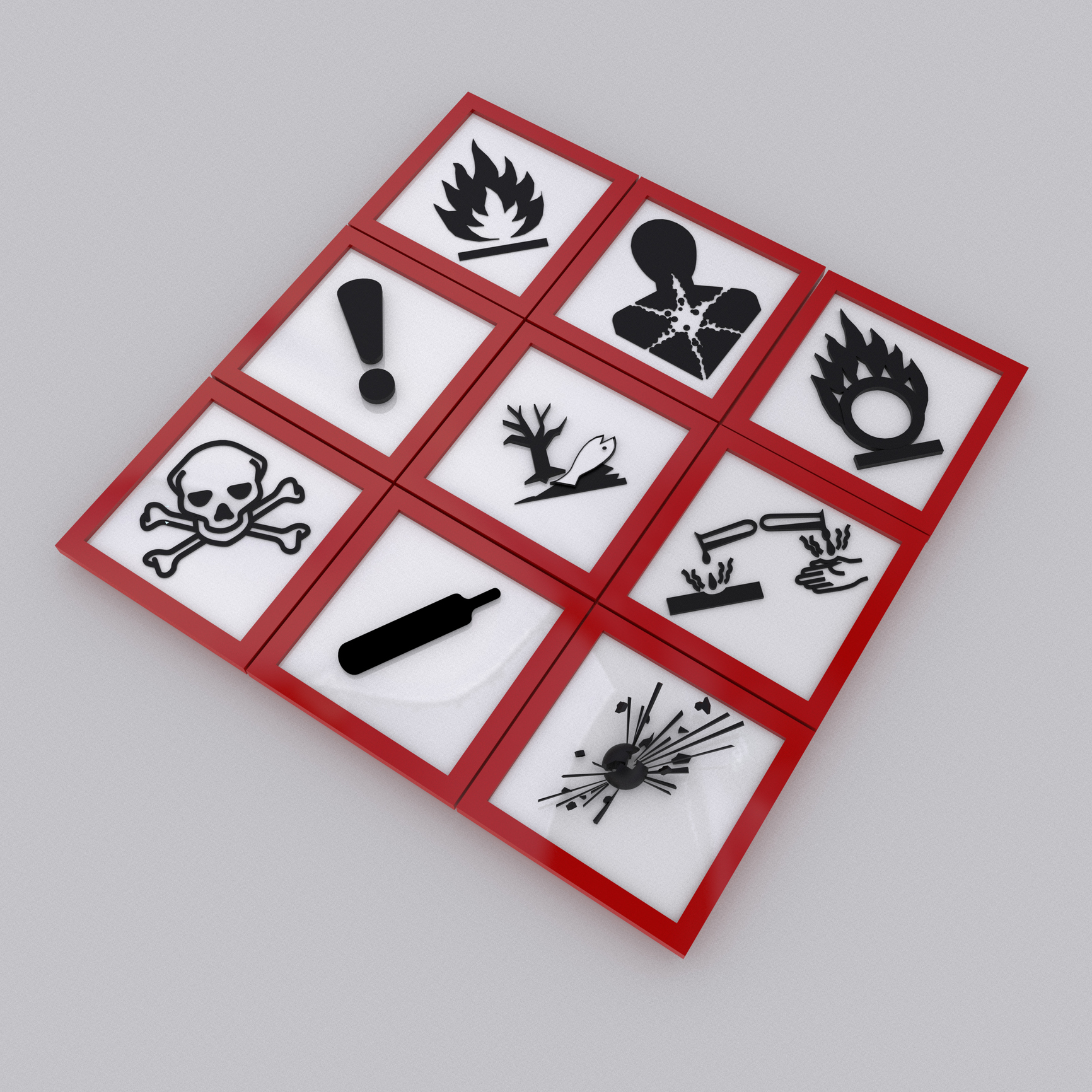
While labelling is important, a picture really does speak a thousand words when it comes to identifying and communicating hazards in the laboratory and workspace. Aside from being easily recognisable at a glance, they convey clear messages across cultural and language barriers, so everyone who sees them can take the necessary action to stay safe.
Pictograms are pictures used to convey specific ideas through their resemblance to an object or concept. There are nine primary pictograms that refer to chemical hazards that are commonly used in laboratories. Thanks to their universal meanings, they are recognised and used across the globe. Depending on the situation, multiple safety symbols may be used at one time. The table below explains each pictogram in this picture, as seen left to right, top to bottom.
table below explains each pictogram in this picture, as seen left to right, top to bottom.

The 9 safety symbols/pictograms.
| 1. Flammables | 2. Oxidising | 3. Acute toxicity |
| 4. Corrosive, eye damage | 5. Explosives | 6. Irritant, hazardous to ozone layer, acute toxicity |
| 7. Environmental toxicity | 8. Serious health hazard, i.e. a carcinogen | 9. Gases under pressure |
Most chemical signs and symbols fall into four distinct categories. Signs in each category are internationally recognised by their colour and shape, ensuring that these symbols are understood around the world. Signs instruct observers to stop doing something, to move somewhere, to take precautions or to take note of equipment. The following table shows the four categories with their associated colours, features, meanings, and examples.
| Category | Warning colour | Instruction | Features | Example |
| Prohibition | Red | • Stop • Shut down • Evacuate • Dangerous behaviour | • Round shape • Black pictogram on white background • Red outline with red diagonal line across | No smoking sign |
| Warning | Yellow | • Be careful • Take precautions | • Triangular • Yellow background • Black pictogram with black edging | Slippery floor warning sign |
| Mandatory | Blue | • Complete a specific action or behaviour | • Round shape • Blue background with white pictogram | Safety boots must be worn sign |
| Emergency | Green | • Escape routes • Emergency exits • Equipment and facilities | • Rectangle or square shape • White pictogram on green background | First aid sign |
Usually, there will be multiple signs present in a single area. For example, an active laboratory would permanently have signs from at least three out of four categories above—with a warning sign temporarily put up if a spill has occurred or the floor has been cleaned.
Another way of identifying chemical hazards is to use International Chemical Safety Cards (ICSCs). This collection of over 1,700 cards is the product of a joint project between the World Health Organisation and the International Labour Organisation, with support from the European Commission.

An example of an International Chemical Safety Card. Source: International Labour Organization.
Cards are prepared in English and peer reviewed biannually. They are then translated by the relevant country’s national institute into the appropriate language for that country. Translated cards are available in 11 languages, including English, French, Spanish, Hebrew, Polish and Italian.
Although similarities exist between the contents of the ICSCs and the Safety Data Sheet (SDS) or Material Safety Data Sheet (MSDS), they are not the same thing. SDS are management documents and are often technically more complex than the simpler ICSCs. Both are important, and they are complementary, with ICSCs providing information at a glance, and SDS adding more detailed information. It is important to note, however, that ICSCs cannot be used as substitutes for SDS as they do not adequately fulfil the legislative requirements surrounding SDS.
If you would like to know more about ICSCs and SDS and how best to manage chemical safety in your lab, please don’t hesitate to contact the team at Chemwatch.
Although the safety pictograms, signs and symbols and cards are internationally recognised, they may still differ from country to country and within each workspace. Ensure you familiarise yourself with the different safety signs and protocols used in your specific workspace.
If you have questions about safety pictograms, signs and symbols and cards and would like advice on chemical and laboratory safety, please contact the Chemwatch team today. Our friendly and experienced staff draws on years of experience to offer the latest industry advice on how to stay safe and comply with Health and Safety regulations while working with chemicals.
Sources: